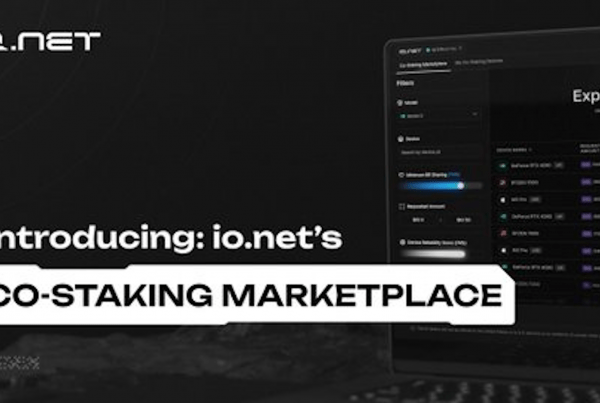
In simple terms, liquidity is a measure of how easily a given asset can be turned into a fiat or another asset. If you’ve got the world’s rarest painting, you’re going to have a hard time finding a buyer without contacting individuals that specialize in rare paintings. On the other hand, if you want to trade $100 for the equivalent in euros, it’ll probably only take you 15 minutes to the nearest bank.
Good liquidity describes an asset, such as US dollars, which can be easily exchanged for other assets. You can hop online and trade US dollars for a car in a matter of minutes. With rare paintings, however, it’ll take a lot before someone’s willing to trade their car for the painting.
The same concept applies to crypto. A high liquidity cryptocurrency is one that can be easily traded, while one that is more difficult to trade is lower liquidity. A great example of high liquidity is stablecoins, since much of crypto trading is already done in stablecoins, they’re very liquid.
Why is liquidity important for a crypto project?
There’s a wide degree of variation in the liquidity of cryptoassets. These are mostly a product of trading volume(the volume of trading activities done over a period of time) and market efficiency(which reflects how well current prices describe the actual value of the asset.)
Cryptoassets with only a few trades per day are relatively illiquid. On the other hand, giants like Bitcoin and Ethereum are traded tens of thousands of times a day, making them highly liquid.
The biggest reason liquidity matters is because the value of a cryptoasset can go up or down over the time it takes for you to complete a trade. For example, if a relatively illiquid altcoin jumped 30% over the course of a day, and you tried to sell at the higher price, your trade might not get completed until the next day, by which the value could have dropped.
Similarly, if you attempt a large trade of an illiquid cryptoasset, you’ll encounter high slippage. This is a term that denotes the difference between the price you intended to trade at, and the price the trade is executed at. While this can be halted with limit orders, you then re-encounter the above issue.
Since crypto projects want their tokens to be valuable and easily tradable, low liquidity is highly undesirable. In order to avoid this, they’ve adopted a number of solutions.
How do DEXs handle liquidity?
One solution to the issue of liquidity is to have a centralized “agent” that will fulfill buy/sell orders at a given price at all times. This is the approach taken by centralized exchanges (CEX) like Binance or Kraken. While this approach is functional, it carries over all of the problems that come with centralization in finance.
Another way to provide liquidity is to replace this centralized agent with a decentralized equivalent. These are decentralized exchanges (DEX) such as Uniswap or PancakeSwap. These exchanges generally rely on liquidity pools(among other things) to provide liquidity.
A liquidity pool is just a smart contract that locks tokens in order to provide liquidity. These pools can provide liquidity in addition to facilitating borrowing and lending currencies.
Liquidity pools are used not only by decentralized exchanges to swap tokens, but also for borrowing and lending activities. As such, they play an important role in the DeFi ecosystem.
How does OraiDEX handle liquidity?
OraiDEX is a CosmWasm-based decentralized exchange with multichain support, excellent speed, and a variety of liquidity options for its users. This exchange is a great example of how a crypto project can ensure high liquidity.
For example, OraiDEX just launched ORAIX, the governance token of the exchange. This governance token will allow people that hold it to participate in votes on where the platform is headed.
Now, OraiDEX wants its token to be as liquid as possible, so its holder could get their money’s worth. In order to ensure that, they’ve implemented a couple of distinct steps:
- Allowing users to directly swap ORAIX with other tokens like LUNA and OSMO with a small(0.3%) fee.
- A large liquidity pool of diverse tokens totaling over $600,000.
- Providing liquidity mining opportunities. This is a process where holders of ORAIX can lend their tokens to OraiDEX and receive a reward.
These 3 steps ensure that ORAIX will be easier to trade upon its release.
How does LunaFi handle liquidity?
LunaFi is another great example of a DeFi platform taking an innovative approach to ensure liquidity. This DeFi betting protocol allows you to put your money and invest in the house, while ensuring all of its users are always paid correctly and on time.
LunaFi makes the user themselves help with liquidity. It does this by allowing you to provide liquidity to the house’s crypto pool, and if the house wins, you win too. LunaFi also incorporates liquidity pools and yield farming as ways to maximize its token’s liquidity.
This is a much safer way to engage in betting, as everything is governed via smart contract, and there’s no room for human error. It also takes an extremely innovative approach in relying on its users to provide some liquidity.
Closing Words
Liquidity is one of the most important concepts to understand in the crypto world. Whether you’re looking to invest in a token, or start a crypto project of your own, having a solid grasp of liquidity can help you avoid common beginner pitfalls. Generally speaking, high liquidity is good, as it ensures you have an easy time trading your assets for other assets. The main ways liquidity is attained is through a crypto asset’s high trading volume, liquidity pools, a centralized agent, or by giving privileges for holding the token.



